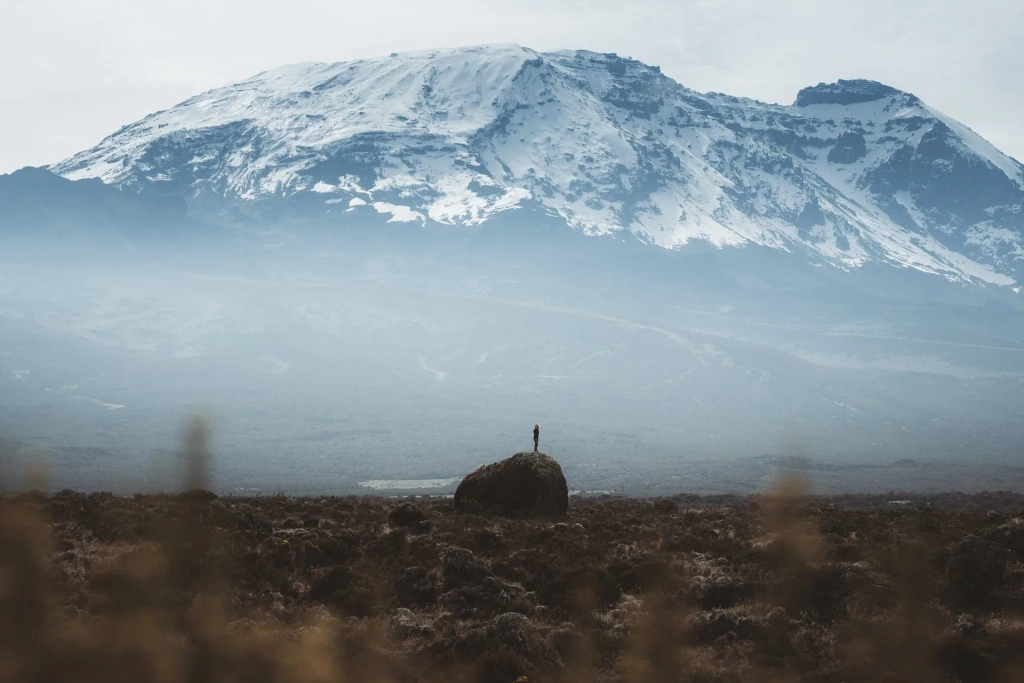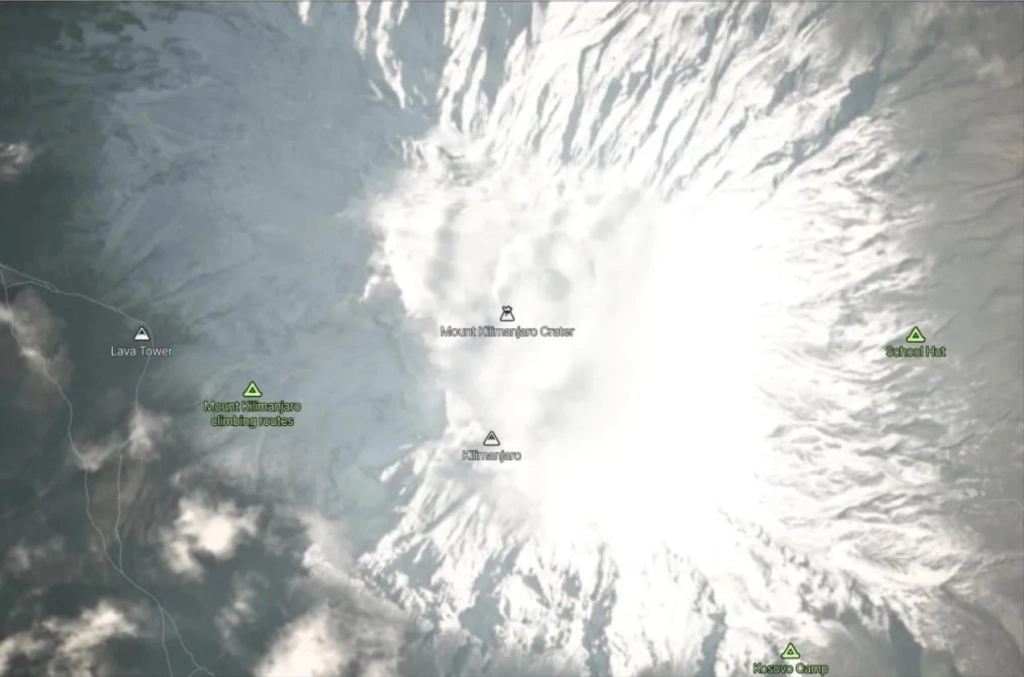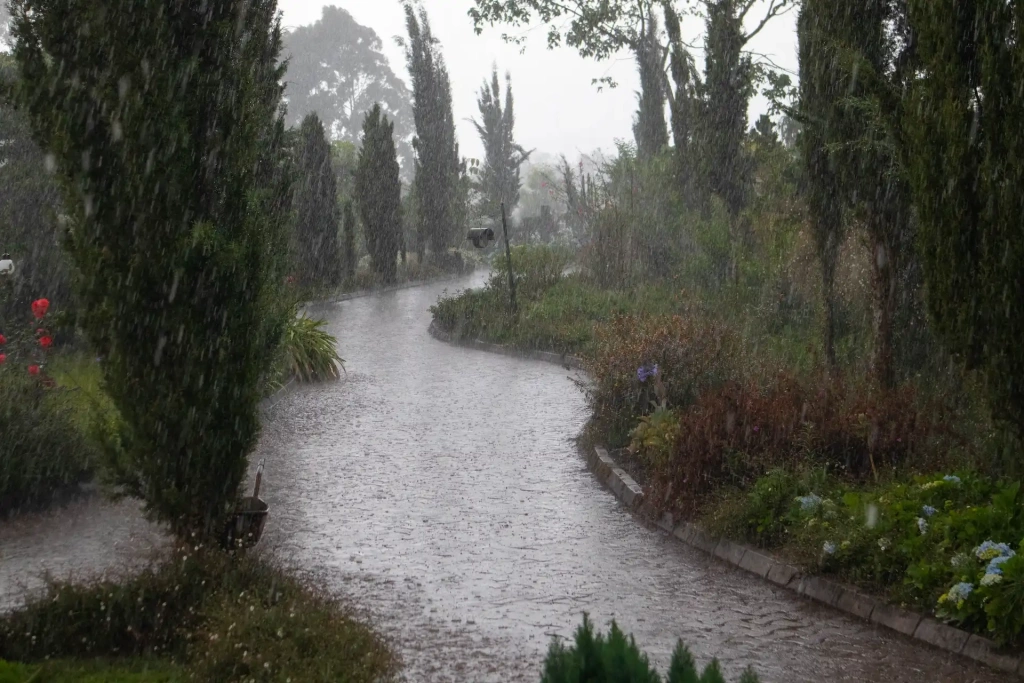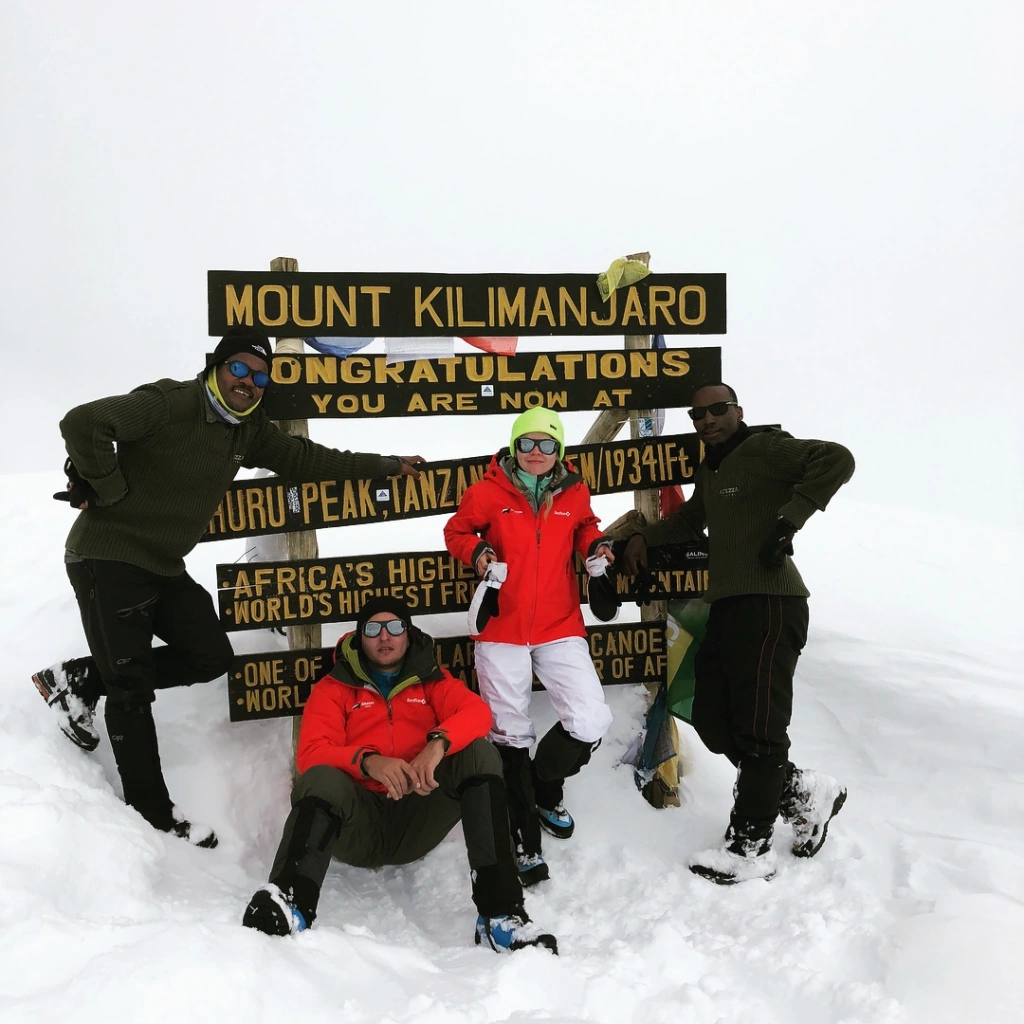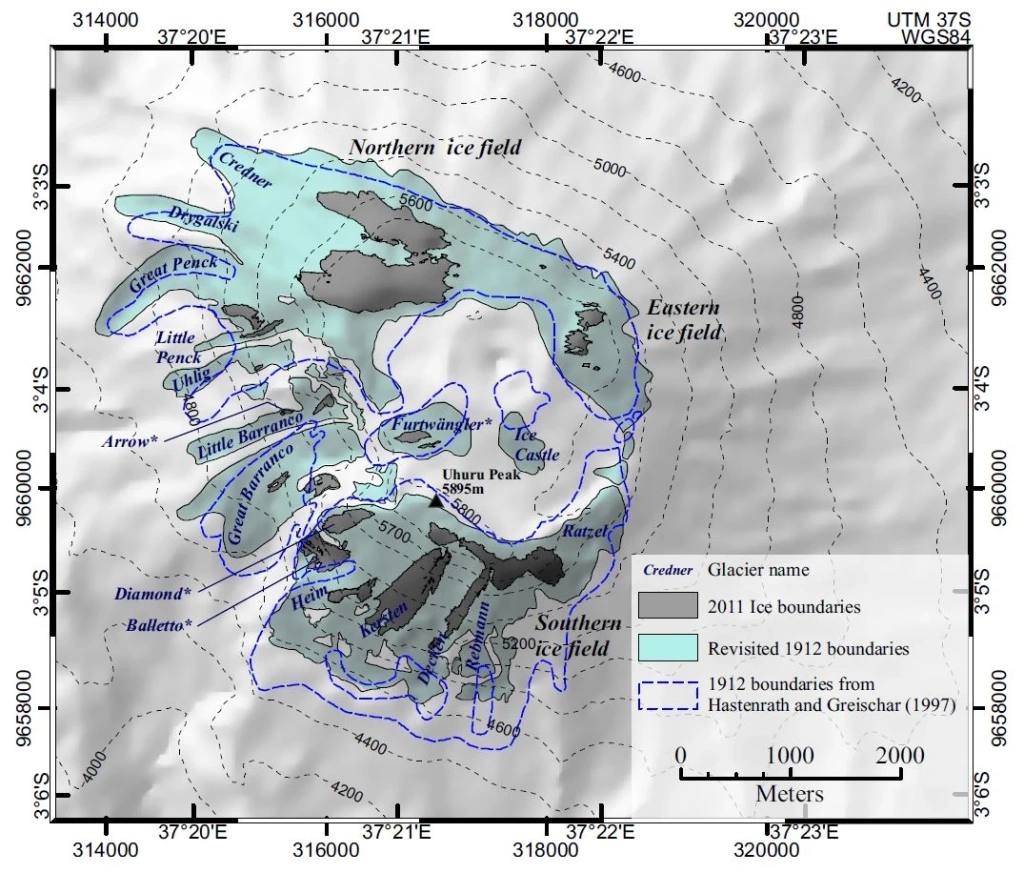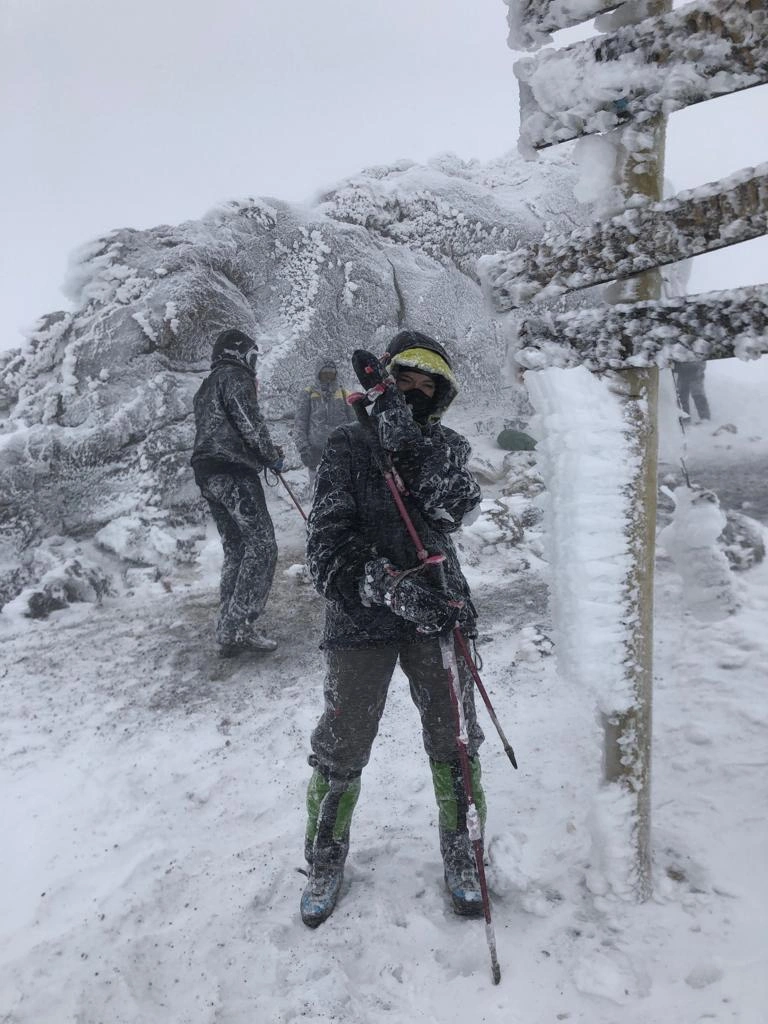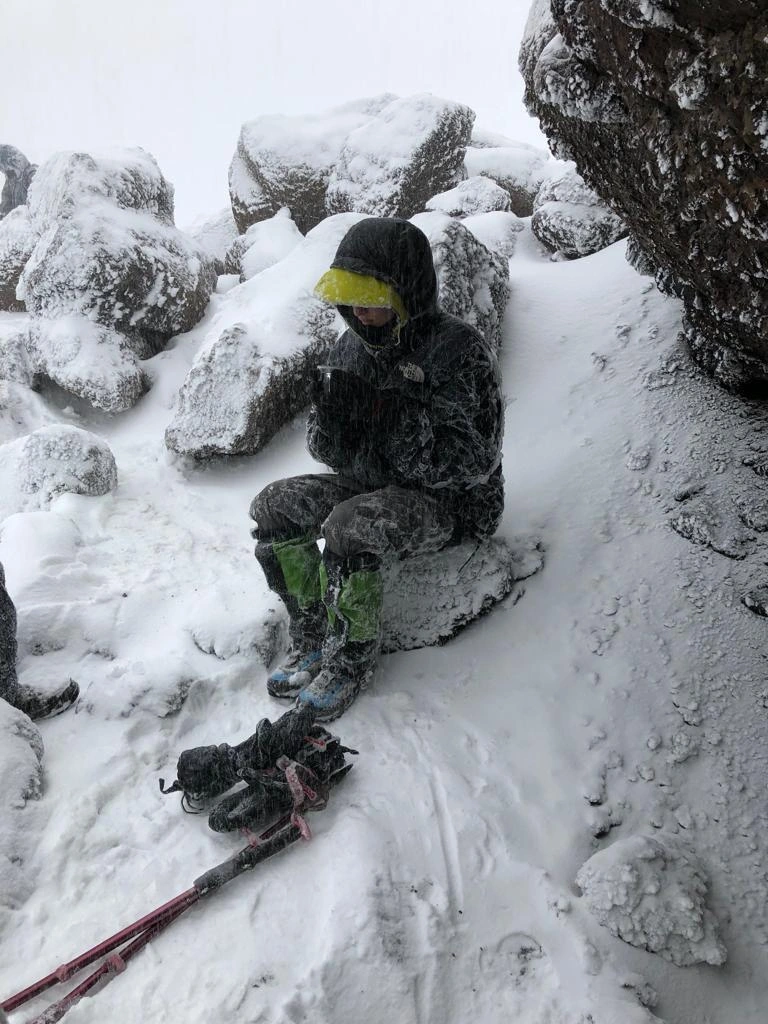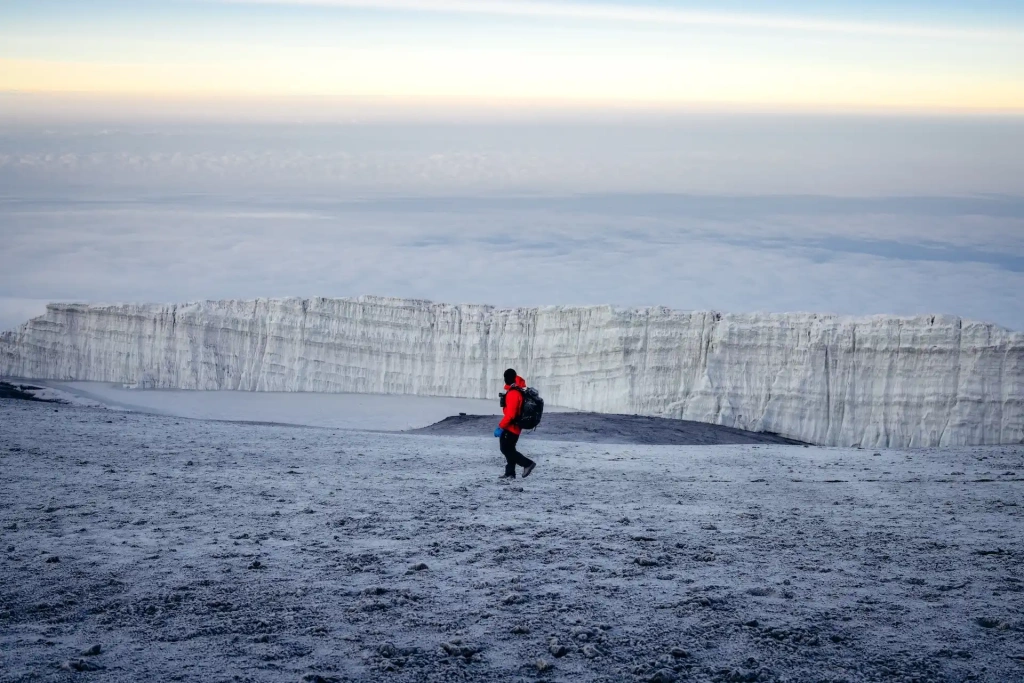Africa is known as the hottest continent in the world, yet numerous photos of Mount Kilimanjaro, its tallest mountain, show it covered in snow. So, when does the snow fall on its summit, and in which months do you need to climb Kilimanjaro to see it? How can you catch a glimpse of snow at Uhuru Peak?
In this article, we will share all the details about snow on Africa's highest peak.
When is there snow on the summit of Kilimanjaro?
Typically, there are several months each year with a significant amount of average snowfall on Mount Kilimanjaro. Considering the low night temperatures at Uhuru Peak, this snow remains, making the white summit of the Roof of Africa visible from a distance. The snowiest months are usually January, February, March, April, May, November, and December. However, this can vary from year to year. Snow can fall almost any time, but the real question is how long it will stay on the summit.
In 2021, we carried out an extensive study. Throughout the year, we monitored the summit of Kilimanjaro using satellite imagery. This allowed us to compile a comprehensive annual report on snow conditions, complete with photographs.
If you look at the photos, you'll notice that the snowiest period is from November to May. However, January and May tend to see slightly less snow. This is a result of the specific climate conditions in Tanzania.
What are the features of Kilimanjaro's weather?
Tanzania's climate influences the weather conditions on Kilimanjaro. Unlike the seasonal changes familiar to North American or European residents, Tanzania’s weather follows a different pattern. It alternates between dry and wet seasons. Here’s how they transition.
When are the rainy seasons in Tanzania?
The long rainy season begins in mid-March and lasts until the end of May. During this period, winds from the Indian Ocean bring moist air to the southern slopes of Kilimanjaro, resulting in heavy rainfall. Following this, the dry season runs from June to October. In November, a second, short rainy season begins, which may end by December or continue until mid-January. As we mentioned, each year can vary. However, the effects of El Niño and global warming have become increasingly noticeable in recent years.
Nevertheless, long-term precipitation observations confirm that are the wettest months in Tanzania.
When it rains on the lower slopes, moist air rises, transforming into snow at the summit of Mount Kilimanjaro, in its highest . Therefore, the guaranteed months to see snow on Kilimanjaro are during the peak rainy seasons: April, May, and November.
What is the driest period in Tanzania?
The period from June to September is the driest. As a result, mountaineers who choose to climb Kilimanjaro during these months will see the gray-brown rocky summit, with only the white glaciers breaking up the monotony.
Altezza Travel helps clear the route to Uhuru Peak
In April 2018, a significant amount of snow fell on Kilimanjaro, preventing climbers from reaching Uhuru Peak. While groups managed to reach Stella Point, they had to turn back along the heavily snow-covered trail due to impassable snowdrifts.
So, Altezza Travel’s mountain team set out for the summit. The journey took much longer than usual. However, we reached the crater and cleared the way to the main peak, carving a path through the snowdrifts. We worked hard at nearly 6,000 meters (19,685 feet). For many, just walking at that height is challenging, and the physical effort required is heroic.
Our porters and guides truly saved the day. Thanks to our efforts, all mountain enthusiasts were once again able to climb Mount Kilimanjaro. You can learn more about the experience on Altezza Travel's Instagram page.
As you can see, there are times on Mount Kilimanjaro when snowfall can be considered an extreme weather event.
Snow and glaciers
The fresh snow falling on Kilimanjaro is crucial in replenishing the glaciers. Essentially, these ancient layers of ice are made up of snow that has melted under the sun, compacted tightly, and preserves records of past precipitation on the mountain.
Interestingly, glaciologists studying Kilimanjaro's glaciers have discovered on the highest mountain peaks the mummified remains of animals that accidentally climbed to high altitudes in the past and froze. These ice masses could be considered the diaries of Kilimanjaro, holding fascinating stories that only they can tell.
Why are Kilimanjaro's glaciers melting?
The glaciers are rapidly retreating, shrinking so quickly that they are predicted to disappear completely by the middle of this century. The primary causes are rising air temperatures and decreasing snowfall resulting from global warming. Each year, snow accumulation on the Roof of Africa decreases, which means that new layers aren't forming and the older ones aren't being covered.
How much of the snow of Mt. Kilimanjaro has disappeared?
Just about a hundred years ago, during the first ascents of Kilimanjaro, there was so much snow and ice in the main crater that only a few climbers could reach Uhuru Peak. They needed climbing gear and ice climbing skills to make the ascent. Today, climate change enables more people to climb Kilimanjaro, but this change is rapidly altering the mountain's appearance.
Tours on Kilimanjaro: snow-covered summit or clear peaks
There are two types of tours on Kilimanjaro: those during the rainy season and those during the dry season. The first option significantly increases the chances of walking on snow at the end of the ascent. If you want to see the snow close to the equator, this is the type of mountain expedition to choose. The second option almost guarantees that there will be no snow on the mountain.
Snow-capped peak adventure
If you take a tour in April, May, or November, you will almost certainly see Kilimanjaro's snow. However, there are no guarantees, as nature can be unpredictable, and the rain doesn’t follow fixed patterns.
There are also good chances of seeing snow between November and April.
When planning your trip to Africa, select the optimal dates for Kilimanjaro tours.
Let’s highlight the potential downsides of climbing Kilimanjaro in April, May, and November. The most obvious drawback is that the rain falls in the lower climatic zones. For many, this can be a deterrent. Consider whether you’re prepared to endure five days of cold tropical rain to see the snow-capped summit of Kilimanjaro.
Besides the stunning views, the advantages include the absence of large crowds of climbers and attractive discounts at hotels during the low tourist season. Regarding crowds, remember that Kilimanjaro is a popular climbing destination, with approximately 60,000 people ascending it each year. The peak period is around New Year when hundreds of climbers head to the Roof of Africa. You won’t experience anything like that in April or May.
Snow-free ascent to Kilimanjaro's summit
If you climb Kilimanjaro from June to September, it is nearly impossible to see Kilimanjaro's snow. There is typically little to no rain or snow. The white glaciers stand out at the summit against the gray-brown rocks and stones. This is a great time to visit the Furtwängler Glacier or descend into the crater to spend the night and get a closer look at the massive Kilimanjaro glaciers.
However, exceptions can occur, such as rain on the lower slopes and snow at the summit, especially in June.
Where else can you see snow in Africa?
Kilimanjaro is not the only place on the continent where snow can be found. It snows periodically on the summit of Mount Kenya and in the Rwenzori Mountains in Uganda, and the snow remains. These mountains, despite the effects of climate change, also have glaciers.
Sometimes, snow falls in other regions, though it typically melts quickly and doesn’t create a snow cover on the warm African ground. This can occur in the Ethiopian highlands, in South Africa and its neighboring countries, and even in the deserts of North Africa.
Check out our blog for more about the search for snow in Africa, and view beautiful and rare photographs of the snow-covered hot continent.
All content on Altezza Travel is created with expert insights and thorough research, in line with our Editorial Policy.
Want to know more about Tanzania adventures?
Get in touch with our team! We've explored all the top destinations across Tanzania. Our Kilimanjaro-based adventure consultants are ready to share tips and help you plan your unforgettable journey.















